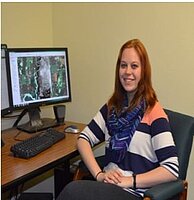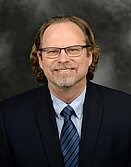Effects of Climate Change, Agricultural Land Use Change, and Dynamic Contributing Area on Streamflow Input to Devils Lake: A Case Study of the Mauvais Coulee Sub-Basins

Courtney Jackson
Fellow: Courtney Jackson
Adviser: Paul Todhunter
Effects of Climate Change, Agricultural Land Use Change, and Dynamic Contributing Area on Streamflow Input to Devils Lake: A Case Study of the Mauvais Coulee Sub-Basins
First, we investigated the basin land cover and land use. We used the National Wetlands Inventory dataset, and a Topographic Wetness Index developed from the 30 m, 10 m, and 3 m digital elevation models to identify the abundance and spatial distribution of wetlands within the Mauvais Coulee. This showed an abundant number of wetlands in the study area. Then we created a county-level time series of agricultural land use in Towner County for 1955-2012, and maps of agricultural land use for 1998 and 2015 from the USDA National Agricultural Statistics Service CropScape Crop Data Layer database. The results showed widespread agricultural development over the study area, and substantial intensification of agricultural land use since 1980, including a decrease in all hay and small grains coverage, and an increase in row crop.
Second, we created a hydroclimatic database for the Mauvais Coulee. Annual areal precipitation (1956-2015, mm) was estimated from monthly precipitation totals from the PRISM dataset, and weighted by sub-basin area. Annual potential evapotranspiratin (1956-2015, mm) was estimated from monthly Tmax and Tmin data from the PRISM dataset using the Hargreaves equation. Monthly streamflow (1956-2015, cfs) was downloaded from the USGS Water Data for the Nation web interface and converted to annual runoff depth (mm). Annual runoff ratio (1956- 2015, %) was derived as a secondary variable from the areal precipitation and runoff depth time series.
Third, we selected the ecohydrological approach (conceptual model) developed by Tomer and Schilling (2009), and the Zhang et al. (2001) implementation of the Budyko framework to partition streamflow change (∆Q) into climatic and human components. The ecohydrological approach provides a qualitative estimate of the partitioning based upon computed values of water excess (Pex) and energy excess (Eex). The Budyko approach provides quantitative estimates of the climatic (∆Qc) and human components (∆Qh) of ∆Q. Selection of the division of the study period into baseline and post-change periods followed standard procedures in the literature based upon streamflow change (1992 was the division year).
Fourth, results from the two methods were obtained and evaluated.
Significance of Research
Temporal trends in streamflow can be driven by natural climate forcing or by landscape forcing attributable to human modification of the landscape. Human drivers of hydrological variables in the Prairie Pothole Region include the original land cover change from native grasslands to crop covers, land use change from small grains and forage crops to more intensive row crop cultivation, agricultural drainage, wetland drainage, installation of tile drainage, development of more productive crop cultivars, and changes in land management.
Numerous methods are available to attempt to separate the individual effects of natural climate variation from human landscape change upon the streamflow record. These methods include statistical regression approaches, physically-based modeling, application of the SWAT model, the ecohydrological approach, and various implementations of the Budyko Hypothesis. These later two approaches, in particular, have been frequently implemented, with dozens of papers in the hydrological literature over the 15+ years. Both approaches are based upon a formulation of the annual water balance equation in which storage change (∆S) is assumed equal to zero. Further, they identify a baseline period within which streamflow variation is assumed to be driven only by climate variations (Q = f(climate)), and a post-change period, in which both climate and human drivers operate (Q = f(climate, human)). Both approaches utilize relationships established during the baseline period to partition changes in streamflow during the baseline and post-change periods (∆Q) into climate and human components (∆Qc, ∆Qh). Thus, stationarity of climate during the baseline and post-change periods is assumed. Demonstration of the suitability of these approaches to the Prairie Pothole Region would provide a helpful tool to water resource managers.
Significant Findings
Both the ecohydrological and Budyko framework approaches produced physically unrealistic findings for the Mauvais Coulee streamflow record. In particular, the Budyko approach estimated that 90 percent of the change in streamflow was due to human factors. This is, by far, the largest percentage reported in the literature using this methodology. Several factors made these approaches unsuited to the Devils Lake Basin, in particular, and the glaciated plains, more generally. First, the period-of-record for streamflow at Mauvais Coulee (1956-2015) samples a period of non-stationary climate. The data show that the region experience a shift between two hydroclimate modes, as suggested by the paleoclimatological and historical records. The baseline and post-change periods traverse two separate climate modes, making the baseline period an unsuitable period from which to estimate streamflow changes during the post-change period. All such approaches must demonstrate climatic stationarity, and not assume it. Second, the streamflow record at Mauvais Coulee experiences a non-linear precipitation-streamflow relationship. This results from two major factors. First, the assumption that ∆S is zero over the study period is clearly not satisfied. The study covers a drought to deluge period in which groundwater and vadose zone storage is emptying during the earlier portion of the study period, and filling during the latter portion of the study period. Thus, the sensitivity coefficients of 14 streamflow to precipitation and potential evapotranspiration are incorrect estimates in both periods. Second, the study area experiences principles of fill-spill hydrology, such that wetland complexes are not filled nor connected to one another in the earlier portion of the study, but progressively experience greater filling and connectivity during the latter portion of the study. The effective basin area contributing to measured streamflow is dynamic over time, and often substantially less than the gross basin contributing area.
Publication
Jackson, Courtney, 2017, Assessment of Climate Change and Agricultural Land Use Change on Streamflow Input to Devils Lake: A Case Study of the Mauvais Coulee Sub-basin, M.S. Thesis, Department of Geography, University of North Dakota, Grand Forks, ND.

Paul Todhunter
Geography & Geographic Information Science
Office: O'Kelly Room 163
Grand Forks, ND 58202-9020
Telephone: 701-777-4593
Email: paul.todhunter@UND.edu


